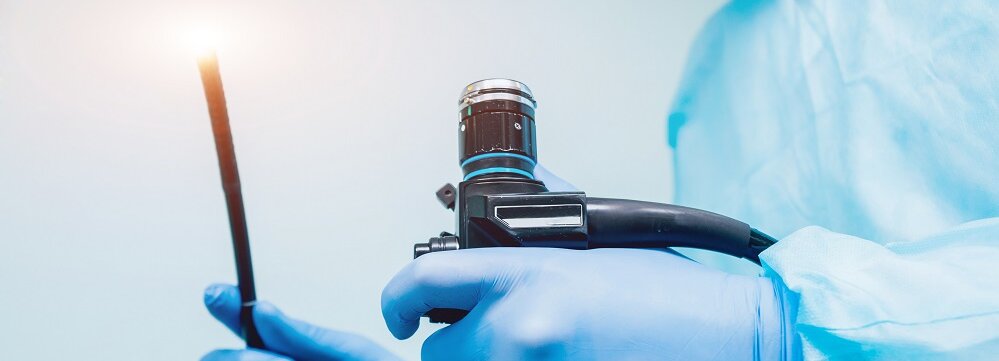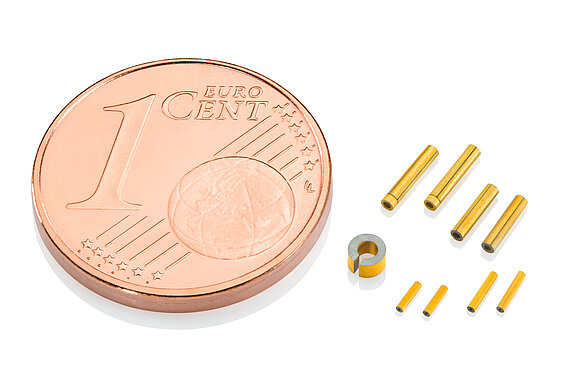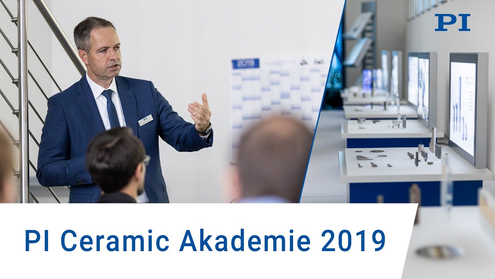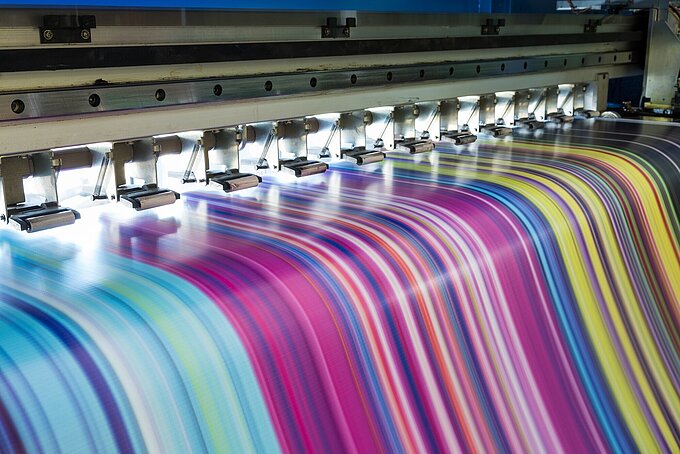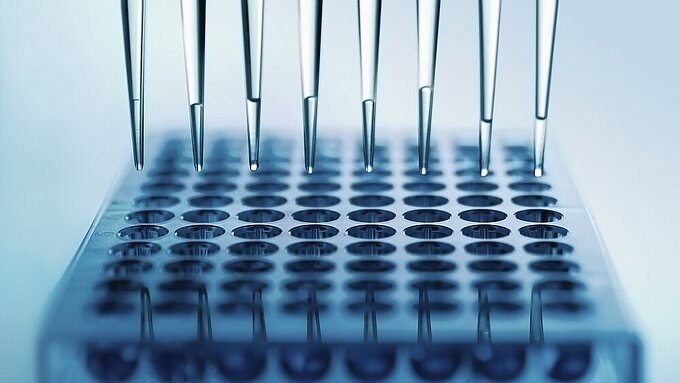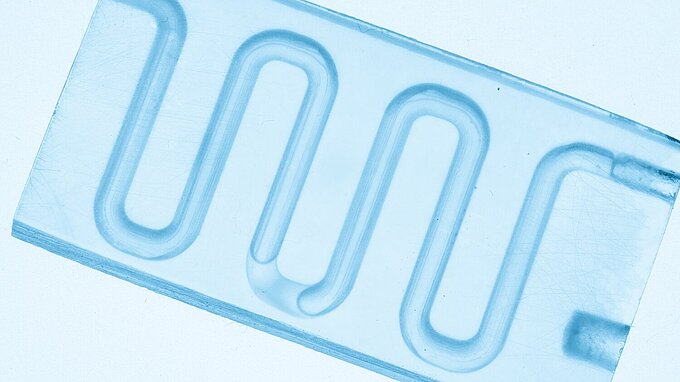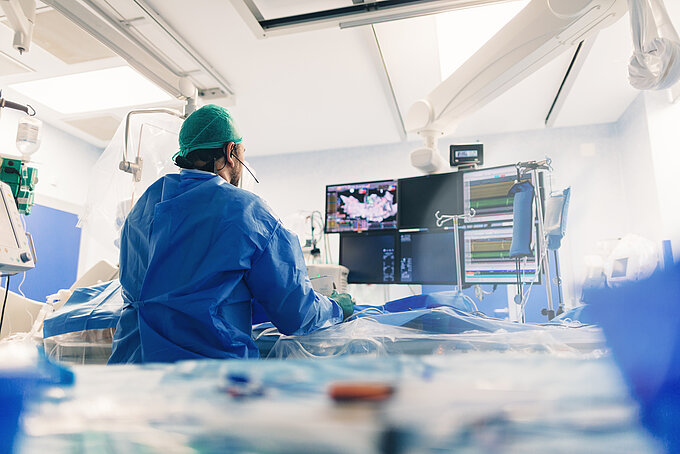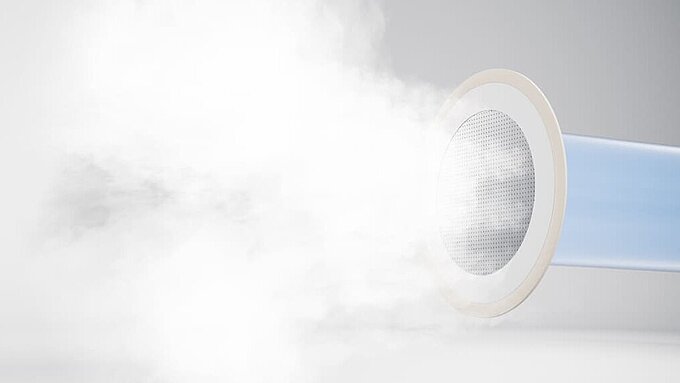Piezoceramic materials are commonly used in actuation and sensing applications across a variety of markets and are key to some of the leading-edge technologies now used in medical technology. From laboratory diagnostics and micro-dosing to ultrasonics and even tartar removal from teeth, medical technologies require components that are fast, reliable and energy saving. Piezoceramics combine these characteristics, giving much higher accuracy and precision – and requiring less power – compared to traditional mechanical actuators and sensors, and are friction free, so are less susceptible to wear and tear, keeping costs down to a minimum. They do not create and are not affected by magnetic fields, and work reliably under extreme conditions, for example under cryogenic temperatures and in vacuums, making them easily adaptable to different environments for such diverse functions as non-destructive testing, therapy and imaging.
HIFU with Ultrasound Transducers
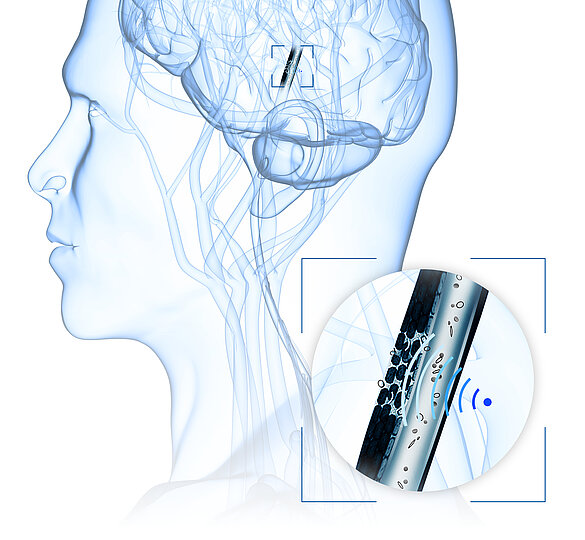
HIFU with Ultrasound Transducers
High-intensity focused ultrasound (HIFU) is a non-invasive therapy that uses focused ultrasound waves to thermally ablate a portion of tissue, meaning the tissue is destroyed using intense heat. This can be used for the removal of tumors in the prostate or uterus, and to treat tremors or epilepsy by targeting specific brain structures. Many piezoelectric elements are arranged on a spherical dome and excited synchronously to focus the energy in the shock wave, which are suitable for use in strong magnetic fields, for example in MRT applications.
PI Ceramic offers a wide range of piezo components that can be used to build HIFU transducers: >> Discs, >> Plates, and focus bowls are manufactured in customer-specific geometries and electrode designs. Our extensive know-how in the manufacturing technologies of bonding and soldering enables us to assemble and contact these components.
Micro Dosing
Fraunhofer EMFT use piezo-operated diaphragm pumps in micro dosing systems to research the high-precision administration of drugs such as insulin with dimensions of just 3.5 x 3.5 x 0.6 millimeters.
Henry Leistner from Fraunhofer EMFT explained "Pumps like this would not be possible without the miniaturized piezo actuators from PI Ceramic."
Miniature Piezo Tubes in Fiber Optic Scanning Endoscopes
The Institute for Biomedical Optics at the University of Lübeck uses ultra-small piezoceramics for fiber alignment in high-resolution glass fiber scanning endoscopes. Miniaturised piezo tubes with segmented electrodes enable better image resolution and a larger field of view, as well as 3D imaging for minimally invasive diagnosis and, in some cases, therapy for diseases.
Transducer for Ultrasound Spirometry
SECO Sensor Consult is not interested in the piezo components themselves, but in the underlying customer-specific PZT powders. From this, the Bavarian company produces transducers for ultrasound spirometry, i.e. the measurement of the lung and respiratory volume - a sensitive and error-prone process. "With the PZT material from PI Ceramic, we can offer a consistent product quality for our air-ultrasonic sensors," says Managing Director Eugen Gergert.
Piezo Actuators for Cell Dispensing
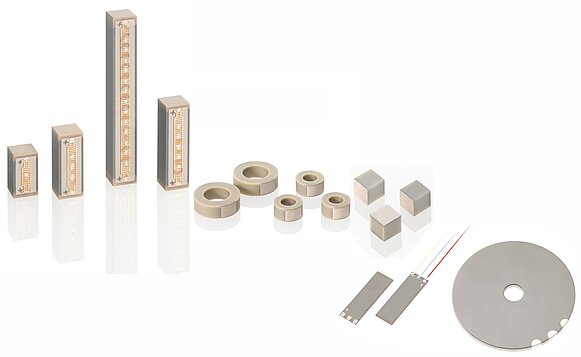
For single cell dispensing, Cytena uses PICMA® Stack multilayer piezo actuators. Installed in the dispensing equipment of the southern German start-up, the components enable precise droplet formation in cell suspensions, so that individual living cells can be isolated - the first step in the cultivation of antibodies for active components in medicines.
What happened at the PI Ceramic Academy 2019, Lederhose
The PI Ceramic Academy is an annual event at the manufacturing site in in Lederhose, Thuringia, where you can learn more about various topics using piezo technology. In 2019, the PI Ceramic Academy was all about medical technology, fot a summery of that event please visit the PI Ceramic website.
